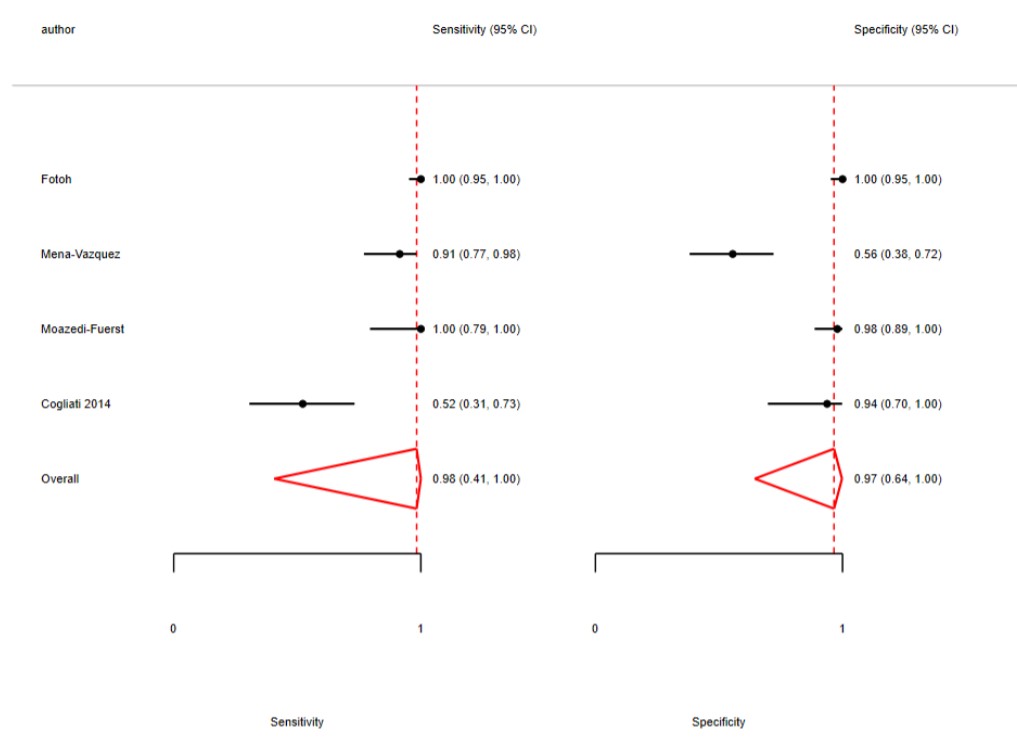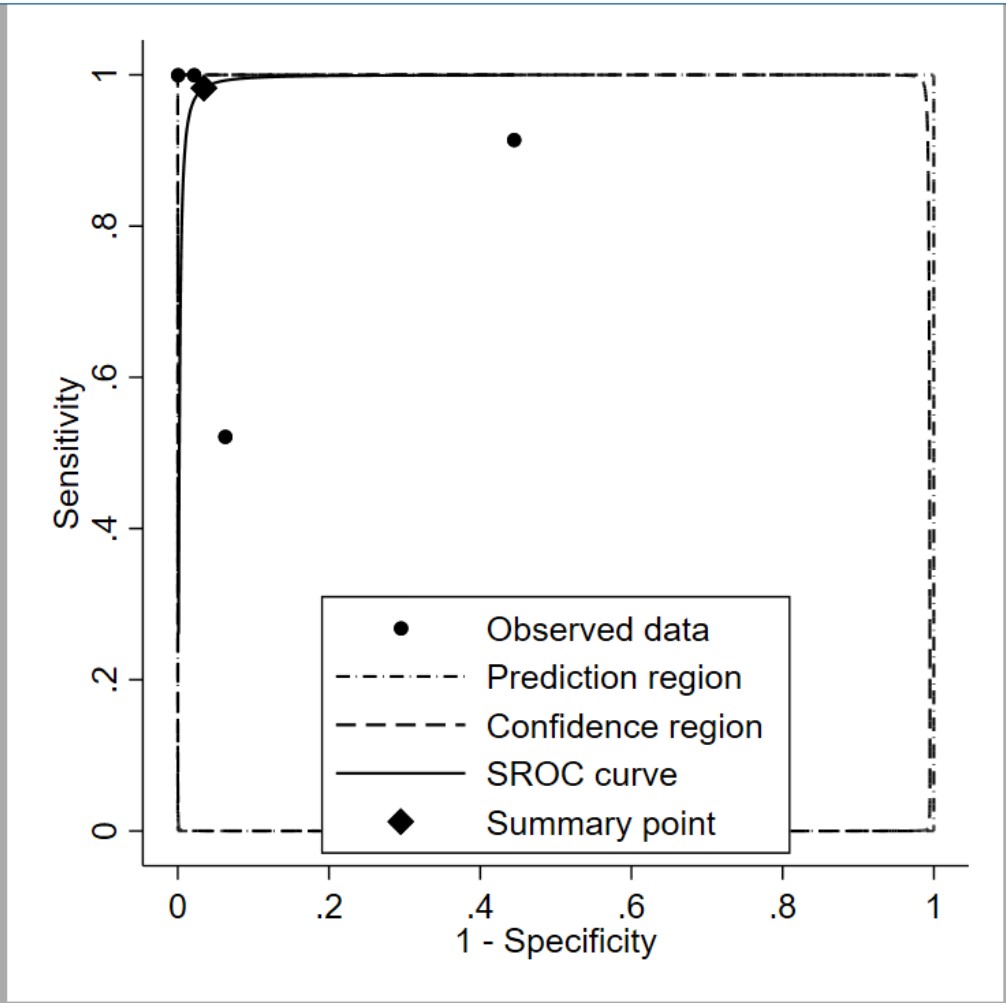Session Information
Session Type: Poster Session C
Session Time: 10:30AM-12:30PM
Background/Purpose: Clinically significant Interstitial Lung Disease (ILD) can occur in up to 10 percent of Rheumatoid Arthritis (RA) patients, which is associated with considerable morbidity and mortality. It presents a 2-10-fold higher hazard ratio for mortality compared to RA without ILD, making its early detection imperative. The 2024 guidelines recommend HRCT and pulmonary function tests (PFTs) for initial screening and monitoring of ILD. However, HRCT exposes patients to radiation, and PFTs may lack sensitivity in early disease stages. Lung Ultrasound (LUS) offers a promising alternative due to its portability and lack of radiation. Sonographic characteristics such as identifying and quantifying B lines and identifying pleural irregularities might be signs of ILD. This study investigates the diagnostic accuracy of LUS for RA-ILD compared to HRCT.
Methods: This PRISMA-compliant systematic review and meta-analysis searched EMBASE, PubMed, Web of Science, and Scopus for English literature studies from year 2000-2023. Studies with at least 20 RA patients evaluating LUS for RA-ILD compared to HRCT were included. Review articles, conference abstracts, case series with less than 20 patients, treatment outcome studies without controls, and non-RA ILD or healthy control studies were excluded. Summary diagnostic accuracy, including sensitivity, specificity, and area under the curve (AUC) was analyzed utilizing Stata software. A diagnostic test meta-analysis using a bivariate model was performed to calculate the pooled sensitivity, specificity, positive/negative likelihood ratios and DOR. We also constructed the respective hierarchical summary receiver-operating characteristic (HSROC) curve to summarize the paired sensitivity and specificity estimates instead of the traditional SROC model.
Results: Four studies encompassing 324 RA patients (140 with HRCT-confirmed ILD) were included. The mean age was slightly higher in the RA-ILD group (61.3 years) compared to the RA-no ILD group (59 years). Notably, 68% of patients in the RA ILD group for smokers as compared to 31 percent in the RA-no ILD group. Analysis revealed significant heterogeneity across studies regarding ultrasound machines (probe frequency ranged from 1-13 mHZ), lung segments examined (14 to 72), and B-line cut-off ( >/=5 to 10) values. The pooled sensitivity for LUS was 95% (95% CI 41- 100%; I2 =86%) and specificity was 98% (95% CI 64-100%; I2 =86%) representing an overall high sensitivity and specificity; however with a significant heterogeneity. The Area under the curve (AUC) was 99% (95% CI 98-100%) suggesting relatively high accuracy (Images 1 and 2). The two of the studies demonstrated a positive correlation of LUS B-lines with HRCT ( 0.806 and 0.944), and the other two did not comment on this.
Conclusion: This meta-analysis highlights that LUS may hold remarkable potential for RA-ILD screening due to it’s real-time visualization, and high diagnostic accuracy. However, significant heterogeneity across studies regarding LUS protocols necessitates standardization to improve generalizability. Further research with more comprehensive studies with larger sample sizes and more rigorous methodologies is necessary to validate study findings.
To cite this abstract in AMA style:
Kaur I, Ramsubeik K, Myant T, Sanchez-Ramos L, Ramrattan L, Kaeley G. Ultrasound for Screening of Rheumatoid Arthritis-Associated Interstitial Lung Disease: A Systematic Review and Meta Analysis [abstract]. Arthritis Rheumatol. 2024; 76 (suppl 9). https://acrabstracts.org/abstract/ultrasound-for-screening-of-rheumatoid-arthritis-associated-interstitial-lung-disease-a-systematic-review-and-meta-analysis/. Accessed .« Back to ACR Convergence 2024
ACR Meeting Abstracts - https://acrabstracts.org/abstract/ultrasound-for-screening-of-rheumatoid-arthritis-associated-interstitial-lung-disease-a-systematic-review-and-meta-analysis/


